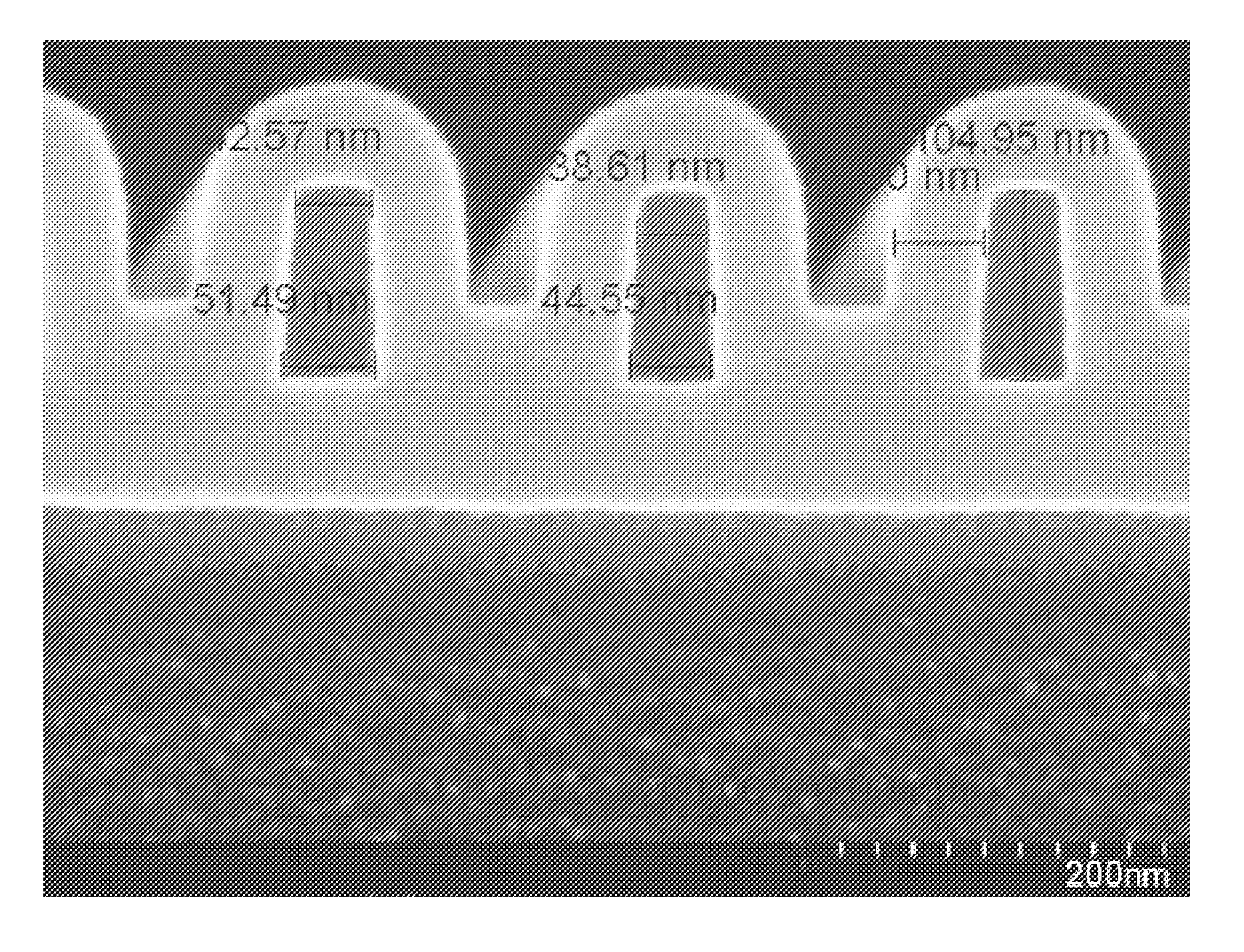Multiple deposition for integration of spacers in pitch multiplication process
a multiplication process and spacer technology, applied in the field of masking techniques, can solve the problems of reducing the size of features, and reducing the minimum pitch of a particular photolithographic techniqu
- Summary
- Abstract
- Description
- Claims
- Application Information
AI Technical Summary
Benefits of technology
Problems solved by technology
Method used
Image
Examples
Embodiment Construction
[0038] It has been found that mandrels can be deformed during the deposition of spacer material. FIG. 2A shows mandrels before depositing spacer material. Where the mandrels are formed of amorphous carbon, silicon oxide can be used as a spacer material, among other materials possibilities. The spacer material is preferably deposited using a process that deposits highly conformal layers, e.g., processes such as thermal chemical vapor deposition of silicon oxide using O3 and TEOS. O3, however, is a strong oxidizer and has been found to shrink and otherwise deform the amorphous carbon mandrels, as shown in FIG. 2B. Consequently, spacers formed on the deformed mandrels may no longer be at their expected and desired positions and / or spacings from one another. As a result, the predictability and uniformity of spacer location and spacing can be adversely affected by mandrel deformation.
[0039] In preferred embodiments of the invention, in a process for minimizing mandrel deformation, a lay...
PUM
| Property | Measurement | Unit |
|---|---|---|
| wavelength | aaaaa | aaaaa |
| wavelength | aaaaa | aaaaa |
| width | aaaaa | aaaaa |
Abstract
Description
Claims
Application Information
 Login to View More
Login to View More - R&D
- Intellectual Property
- Life Sciences
- Materials
- Tech Scout
- Unparalleled Data Quality
- Higher Quality Content
- 60% Fewer Hallucinations
Browse by: Latest US Patents, China's latest patents, Technical Efficacy Thesaurus, Application Domain, Technology Topic, Popular Technical Reports.
© 2025 PatSnap. All rights reserved.Legal|Privacy policy|Modern Slavery Act Transparency Statement|Sitemap|About US| Contact US: help@patsnap.com



